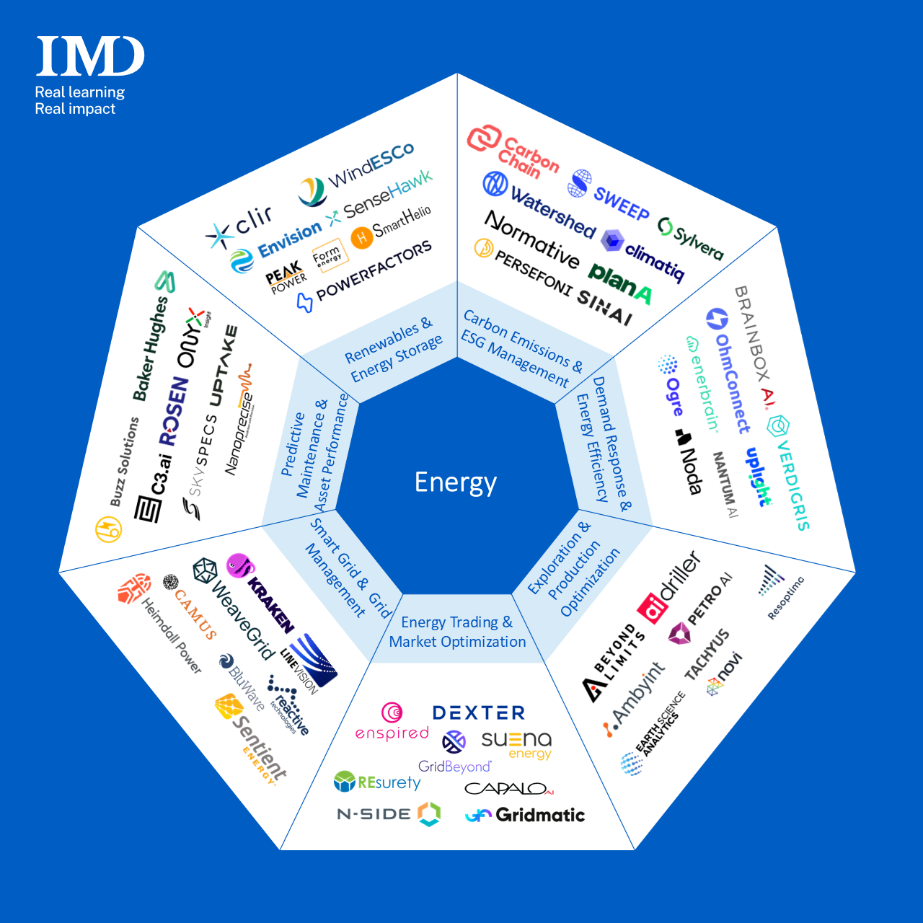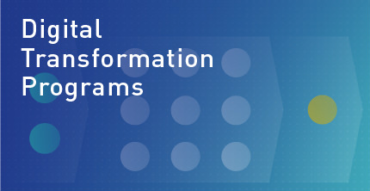Just as AI acts as a “smart stethoscope” for doctors or a “personal shopper” for retail, it is becoming the central nervous system for the global energy industry. The global market for AI in energy is forecast to reach over $54.8 billion by 2030, growing more than 30% each year. Behind the scenes, AI is taking on roles once unimaginable: predicting when a wind turbine might falter, optimizing the flow of electrons across increasingly volatile grids, and trading electricity in real-time markets with a precision, no human team could match.
What was once managed with spreadsheets, manual controls, and operator intuition has become a high-speed environment. Algorithms now continuously coordinate supply, demand, and carbon footprints. As energy systems become more distributed, digital, and decarbonized, AI is emerging as the key enabler that keeps the system clean, reliable, and economically viable.
In this overview, we explore seven key areas where AI is reshaping energy: Carbon Emissions & ESG Management, Demand Response & Energy Efficiency, Exploration & Production Optimization, Energy Trading & Market Optimization, Renewables & Energy Storage, Smart Grid & Grid Management, and Predictive Maintenance & Asset Performance.
Below we explore the leading trends and players defining this new energy era.
1. Carbon Emissions & ESG Management
Effective decarbonization starts with precise, data-driven visibility. As regulatory pressure mounts, companies need to track their carbon footprint down to the finest detail (Scope 1, 2, and 3 emissions). AI automates the ingestion of utility bills, supply chain data, and operational metrics to generate audit-ready ESG reports.
Key players include Carbon Chain and Watershed, which help enterprises account for their total carbon impact. Sweep and Normative offer platforms to visualize and reduce emissions, while Sylvera specializes in rating carbon credits to ensure offsets are legitimate.
| Tool | Primary Use | Best For |
|---|---|---|
| Watershed | Enterprise climate platform | Corporate sustainability teams |
| Carbon Chain | Supply chain emissions tracking | Heavy industry & commodities |
| Sylvera | Carbon credit ratings & data | Carbon traders & offsets buyers |
| Plan A | Carbon accounting & ESG reporting | Corporate compliance |
2. Demand Response & Energy Efficiency
Energy efficiency begins with making every building smarter. With AI, buildings are shifting from passive energy consumers to active, responsive elements of the grid. By learning occupancy patterns and thermal properties, these tools adjust HVAC (Heating, Ventilation and Air-Conditioning) and lighting in real-time to cut costs without sacrificing comfort.
Innovators like Brainbox AI and Enerbrain connect to existing building management systems to autonomously reduce energy drift. On the consumer side, OhmConnect gamifies energy saving during peak hours, while Uplight provides the digital engagement layer for utilities to incentivize efficiency.
| Tool | Primary Use | Best For |
|---|---|---|
| Brainbox AI | Autonomous HVAC optimization | Commercial real estate |
| OhmConnect | Residential demand response | Utilities & Homeowners |
| Verdigris | Smart electrical metering & analytics | Facility managers |
| Uplight | Customer engagement and efficiency for utilities | Utility companies |
3. Exploration & Production Optimization
While the world transitions, traditional oil and gas operations remain critical. Here, AI is used to maximize safety and efficiency while minimizing environmental impact. Algorithms analyze seismic data to pinpoint resources and optimize drilling paths.
Beyond Limits brings cognitive AI to complex industrial operations, while AI Driller automates and remotely manages drilling processes, minimizing human error and improving safety and consistency across multiple rigs. Petro AI and Tachyus deploy fast, physics-informed AI models for reservoir management and production forecasting to extend asset life efficiently.
| Tool | Primary Use | Best For |
|---|---|---|
| Beyond Limits | Cognitive AI for industrial ops | Major energy producers |
| AI Driller | Autonomous drilling automation | Drilling contractors |
| Petro.ai | Geoscientific analytics | Upstream operators |
| Tachyus | Reservoir modeling & optimization | Oil & Gas operators |
4. Energy Trading & Market Optimization
Energy markets are volatile, influenced by weather, geopolitics, and grid congestion. AI trading bots can digest these variables instantly to execute trades at the optimal moment, a crucial capability as renewable penetration makes prices more erratic.
Companies like Dexter and Enspired offer AI-driven trading as a service, helping power producers monetize flexibility. GridBeyond and N-Side focus on optimizing assets, including batteries and generator, across various markets (day-ahead, intraday, balancing), ensuring that battery and generation assets capture the highest value.
| Tool | Primary Use | Best For |
|---|---|---|
| Dexter | Short-term power trading algorithms | Energy traders |
| Enspired | AI-based energy trading-as-a-service | Battery owners & utilities |
| N-Side | Grid & market optimization | Transmission operators & Exchanges |
| GridBeyond | Distributed energy resource (DER) management & trading | Commercial and Industry energy businesses |
5. Renewables & Energy Storage
Renewable energy is inherently variable: the sun doesn’t always shine, and the wind doesn’t always blow. The biggest challenge in renewables is intermittency. AI solves this by analyzing weather patterns to predict generation output with hyper-accuracy, allowing operators to optimize storage and dispatch.
Startups in this space are focusing on getting every electron out of assets. Clir and WindESCo use AI to detect underperformance in wind turbines, adjusting yaw and pitch to capture more energy. Envision and PowerFactors provide integrated platforms to manage vast renewable fleets, while Form Energy is tackling the storage frontier.
| Tool | Primary Use | Best For |
|---|---|---|
| Clir | Renewable asset performance optimization | Wind & Solar farm operators |
| WindESCo | Wind turbine yield improvement | Wind energy owners |
| Envision | AIoT for net-zero orchestration | Global renewable developers |
| Form Energy | Long-duration energy storage | Utilities and grid-scale storage customers |
6. Smart Grid & Grid Management
The grid is the backbone of the energy system, and it requires a massive upgrade to handle EVs and distributed solar. AI provides the visibility needed to prevent blackouts and manage congestion.
Kraken Technologies has become a dominant platform for managing decentralized energy assets. WeaveGrid and Camus Energy specialize in integrating electric vehicles and local resources into the grid without overloading transformers. LineVision uses sensors and analytics to monitor transmission line health, unlocking extra capacity on existing wires.
| Tool | Primary Use | Best For |
|---|---|---|
| Kraken Technologies | Distributed energy management | Utilities & Retailers |
| WeaveGrid | EV-Grid integration | Auto OEMs & Utilities |
| LineVision | Transmission line monitoring | Grid operators (TSOs/DSOs) |
| Camus Energy | Grid orchestration for local distribution networks | Distribution Utilities |
7. Predictive Maintenance & Asset Performance
In energy, equipment failure can be catastrophic and costly. AI shifts maintenance from “scheduled” to “predictive.” By listening to vibrations and analyzing sensor data, algorithms predict failures weeks before they happen. According to GlobalData, AI-enabled predictive maintenance can cut maintenance costs by up to 30% while increasing equipment availability by around 20%.
Industry heavyweights like C3.ai and Baker Hughes utilize enterprise AI to monitor and predict failures across thousands of assets simultaneously. SkySpecs employs autonomous drones and AI to conduct detailed, automated inspections of wind turbine blades, while Buzz Solutions analyzes visual data for power line inspections, thus enhancing grid reliability and reducing downtime.
| Tool | Primary Use | Best For |
|---|---|---|
| C3.ai | Enterprise AI reliability suites | Large industrial enterprises |
| Baker Hughes | Condition monitoring and asset protection | Turbomachinery / O&G |
| SkySpecs | Drone-based blade inspection | Wind farm operators |
| Buzz Solutions | Visual grid inspection analytics | Utilities & Infrastructure firms |
Conclusion
The energy sector is undergoing a dual transformation: it is becoming greener and smarter simultaneously. AI is the bridge between these two goals.
Across all these seven domains, AI is becoming the common denominator of progress in energy. It’s tying together the once-siloed parts of the industry into a more responsive, automated whole. Crucially, these innovations are not just theoretical. They are already delivering tangible results. From Watershed helping corporations account for their carbon to Kraken Technologies balancing the flow of electricity into millions of homes, these tools are essential for a reliable, sustainable future.
In this new landscape, energy companies are utilizing data and AI to ensure efficiency, safety, and reliability, while meeting decarbonization goals.



